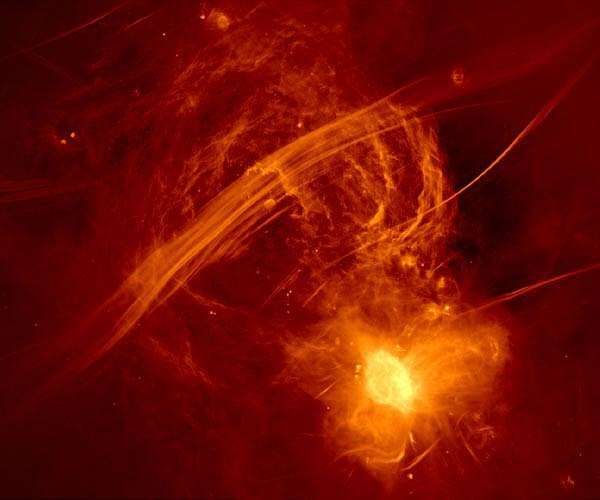27.10.2024

At the High-Altitude Water Cherenkov (HAWC) observatory, situated 13,000 feet above sea level on Mexico's Sierra Negra volcano, researchers have made a remarkable discovery concerning the Milky Way galaxy. An international research team, co-led by Los Alamos National Laboratory, has observed ultrahigh-energy gamma rays exceeding 100 teraelectron volts (TeV) and traced their origin to the galaxy's center for the first time.
"These results are a glimpse at the center of the Milky Way to an order of magnitude higher energies than ever seen before," said Pat Harding, a physicist at Los Alamos and the Department of Energy's principal investigator for the project. "The research for the first time confirms a PeVatron source of ultrahigh-energy gamma rays at a location in the Milky Way known as the Galactic Center Ridge, meaning the galactic center is home to some of the most extreme physical processes in the universe."
The HAWC observatory has been collecting data for over seven years, during which researchers observed nearly 100 gamma-ray events exceeding 100 TeV. According to an analysis led by Sohyoun Yun-Carcamo in *Astrophysical Journal Letters*, this data allows the team to study cosmic ray interactions with the PeVatron and compare the results with other observations. This work helps to pinpoint the location of these processes - right at the Milky Way's center.
The PeVatron itself is still not well understood, but its presence indicates highly violent phenomena in the galactic core. This region contains a supermassive black hole surrounded by neutron stars, white dwarfs, and stars stripping material from each other. Dense gas clouds with temperatures reaching millions of degrees obscure much of this region, making gamma-ray detection crucial for studying these cosmic events.
Ultrahigh-energy gamma rays signal the presence of a PeVatron source, which accelerates particles to an incredible million billion electron volts (PeV), far beyond the energy produced by ordinary light sources. The protons produced by the PeVatron travel at nearly the speed of light, colliding with surrounding gas to generate these high-energy gamma rays. The exact nature of the PeVatrons remains a mystery, but the violent processes they represent, including supernovae or even black holes swallowing other black holes, are thought to drive these powerful particles.
"A lot of those processes are so rare you wouldn"t expect them to be happening in our galaxy, or they occur on scales that don"t correlate with the size of our galaxy," Harding said. He explained that such events, like black holes consuming one another, are more likely to occur outside the Milky Way.
HAWC is uniquely designed to detect the small number of ultrahigh-energy gamma rays that manage to travel interstellar distances to Earth. Located on the Sierra Negra volcano, the observatory uses 300 water-filled grain silos equipped with photomultiplier detectors to capture Cherenkov light, a phenomenon that occurs when particles from air showers, produced by the gamma rays, pass through the tanks faster than the speed of light in water.
The HAWC experiment builds on the previous Milagro experiment, which operated in the Jemez Mountains near Los Alamos. The next step in this research will be carried out at the Southern Wide-field Gamma-ray Observatory, a facility currently being constructed in Chile's Atacama Desert. This new observatory will give scientists an even clearer view of the Milky Way's center, bringing us closer to solving the mystery of the PeVatron.
Quelle: SD
